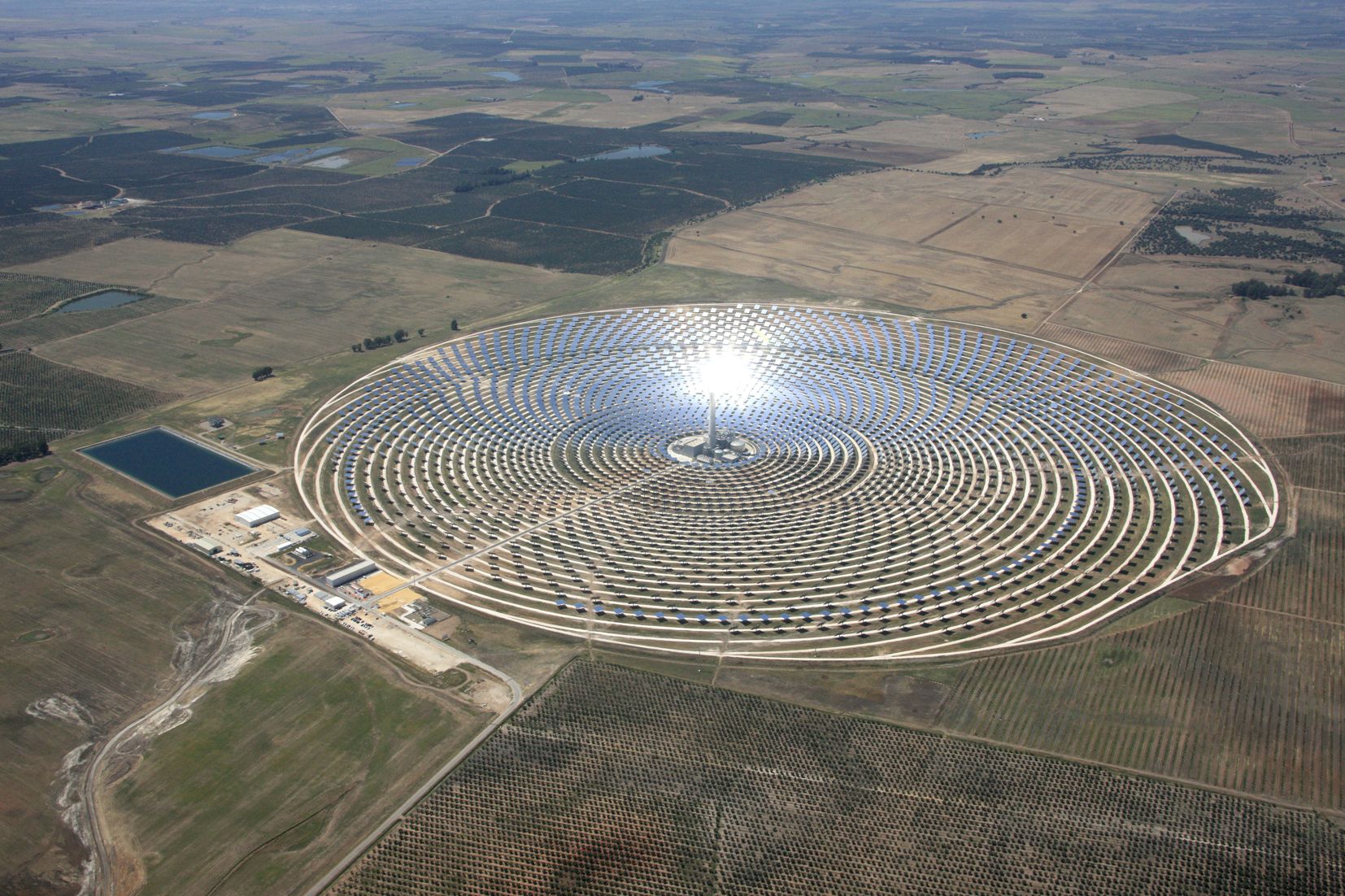Press Release #06
From Continent to Continent: Electricity Transmission between Africa and Europe - Fraunhofer ISE Develops Solutions for the Super Grid
The largest solar power plant in North Africa is presently being built in Ouarzazate, Morocco. Already in 2016, this plant shall produce cheaper, emissions-free electricity for half a million people. In future, projects like the one in Ouarzazate could also generate electricity for the European continent. Electricity transmission between continents requires a reliable network, even at the production sites. The Fraunhofer Institute for Solar Energy Systems ISE, together with other Fraunhofer institutes, is investigating different aspects of a so-called “Super Grid”. Their research involves modeling a suitable energy system, developing technological solutions for storage as well as the generation and distribution of DC power.

Modeling an Ideal Energy System
The scientists at Fraunhofer ISE started with computer modeling to find out technical detailed solutions for a suitable energy system. Next, they created a system model, based on the regions of North Africa and Southern Europe, to simulate the interaction between renewable power plants and those using conventional fuels. Using an energy system model (RESlion) for optimization, the program searches for new power plant locations, considering all existing production and storage systems as well as the grid infrastructure. The optimization results show that photovoltaic plants in North Africa which are installed in close proximity to the load are more profitable, even when the site has a lower annual irradiation. Concentrator solar thermal power plants (CSP) are appealing when large thermal storage capacities are available in the network for securing the system stability. “It is important that the power supply remains reliable when using renewable energy sources. Electricity from North Africa can, for example, fill gaps in the European power supply which occur due to site-dependent fluctuations in renewable energy sources. Balancing electricity demand and surplus over a large range of locations is one of the central ideas behind the Super Grid,” explains Dr. Werner Platzer, Division Director “Solar Thermal and Optics” at Fraunhofer ISE and Coordinator of the project “Super Grid”.
More Efficient Power Plants using Optimized Storage
The advantage of solar thermal plants is that they can provide cost-efficient and dispatchable electricity even at night time. This is due to a thermal storage that stores heat produced during times of surplus production and then, upon demand, is converted to electricity by means of a steam turbine. At Fraunhofer ISE, simulations are used to investigate and evaluate different integration concepts for thermal storage. The software tool “ColSim-CSP”, developed at Fraunhofer ISE, is used for this purpose. The various power plants analyzed differ in their optical technology (Fresnel collectors, parabolic trough or central tower) as well as in the heat transfer medium used. For systems featuring direct evaporation using water as the heat transfer medium, for example, an innovative latent heat storage with a screw-shaped heat exchanger was investigated. Due to this specially designed heat exchanger, the storage capacity and the heat transfer process are decoupled, which promotes the solidifying and melting processes. For storage, either two separate tanks or, to save materials, a single tank with packing in which hot and cold molten salt are alternately layered, can be used. In order to evaluate the potential of such layered storage tanks, a prototype was experimentally investigated. Also the corrosive effect of the hot salts on different types of steel was analyzed.
Lower Losses with Local DC Electricity Grids
Electricity transmission in the “Super Grid” also opens up potential for optimization. Large-scale renewable power plants or regional power plant networks are often scattered over large areas. Many power converters are distributed throughout the grid. In such a system, not every power plant should feed directly into the network and the converters should be as efficient as possible. The transmission losses and the total costs for the grid increase with each additional interface created between producers, grid and consumers. An effective strategy, therefore, is to first bundle the electricity generated from several power plants at the medium-voltage level and store it in batteries as needed. Subsequently the electricity is fed into a high voltage grid at a central station for further transmission. Here highly efficient power electronics take on an important role. Fraunhofer ISE developed a demonstrator of a compact, high efficiency DC converter (DC/DC). By using novel silicon carbide (SiC) semiconductors, a power electronic system with over 10 kV blocking voltage and low switching energies can be realized. This technology makes a direct connection to the medium voltage distribution grid possible.
About the “Super Grid” Project
“Super Grid” is a project of the Fraunhofer-Gesellschaft with Fraunhofer ISE serving as coordinator. The project’s goal is to develop key technologies for the interface between electricity production and grid feed-in and to optimize these technologies with respect to all aspects in the system. Other project partners are the Fraunhofer Institutes for Optronics, System Technologies and Image Exploitation IOSB, for Mechanics of Materials IWM, for Integrated Systems and Device Technology IISB and for Systems and Innovation Research ISI.
Last modified: